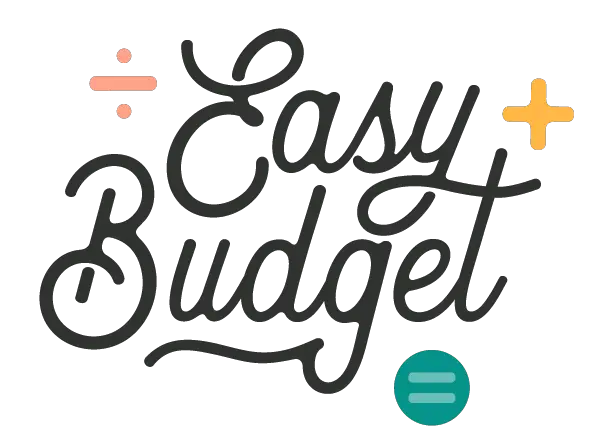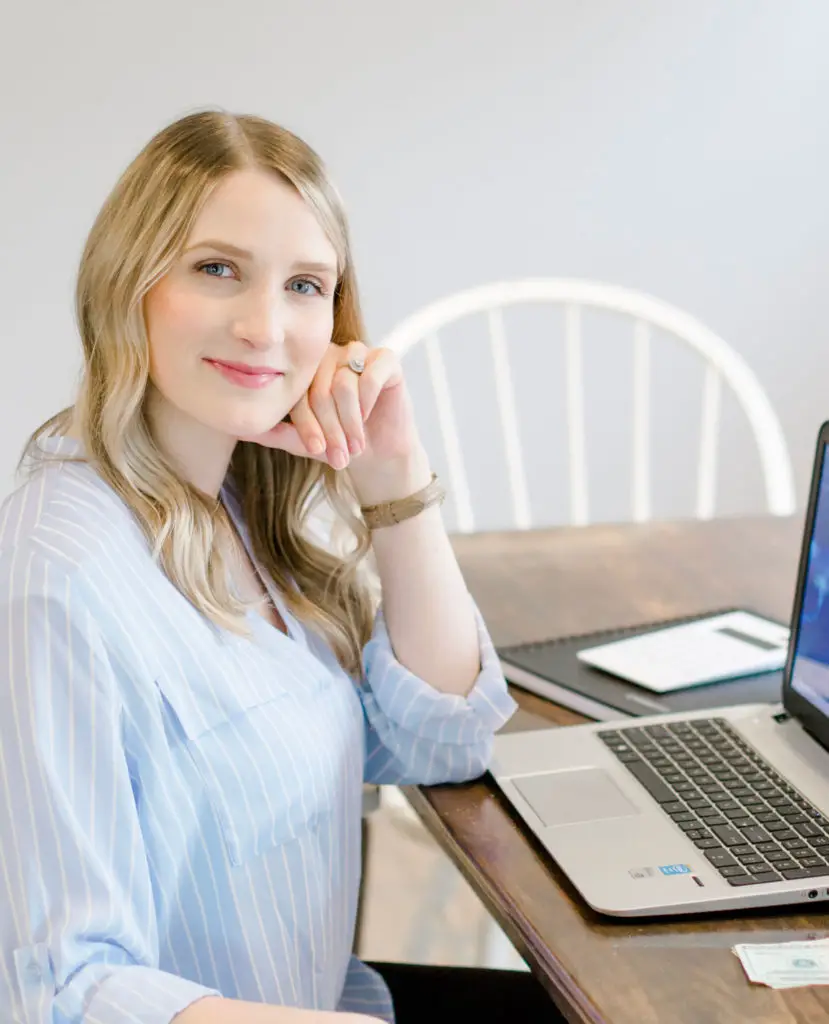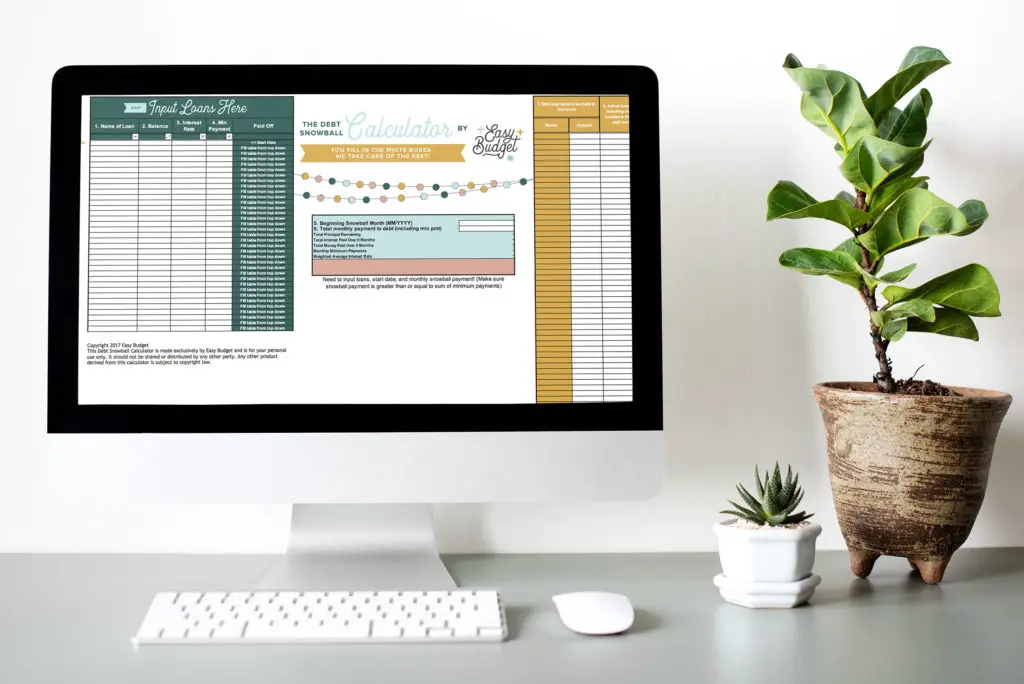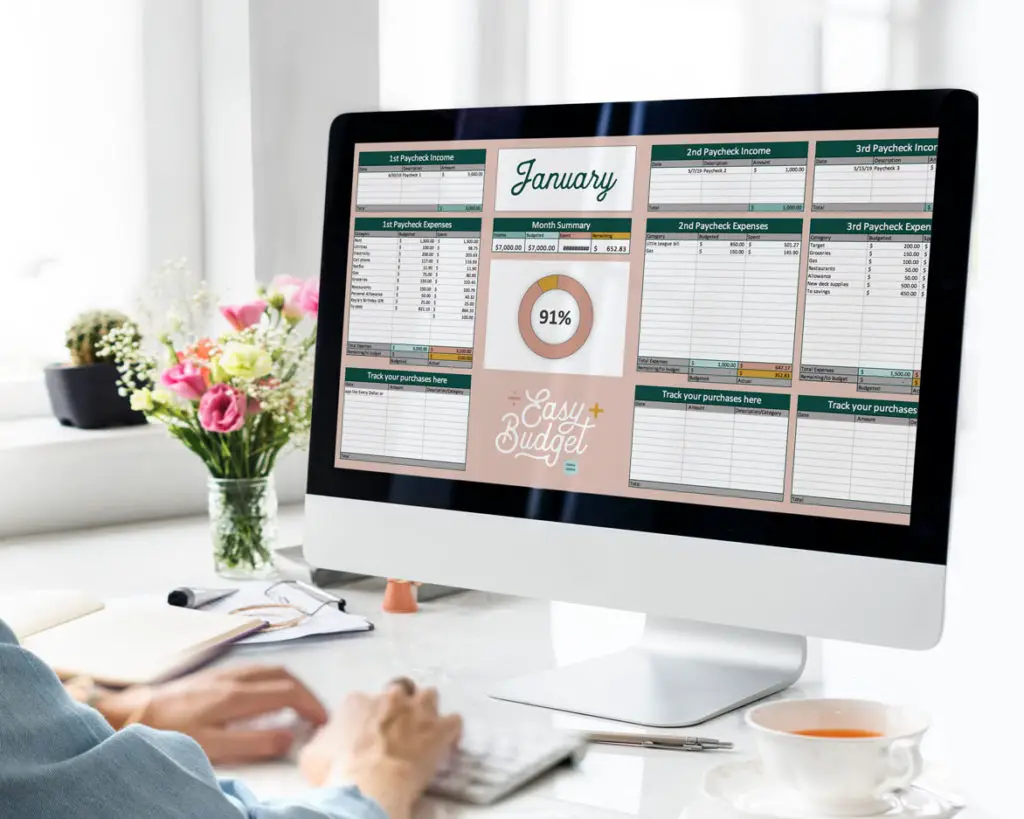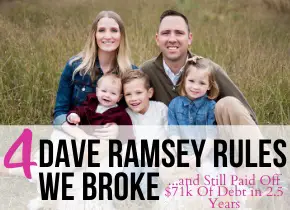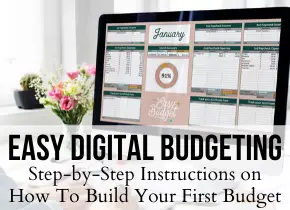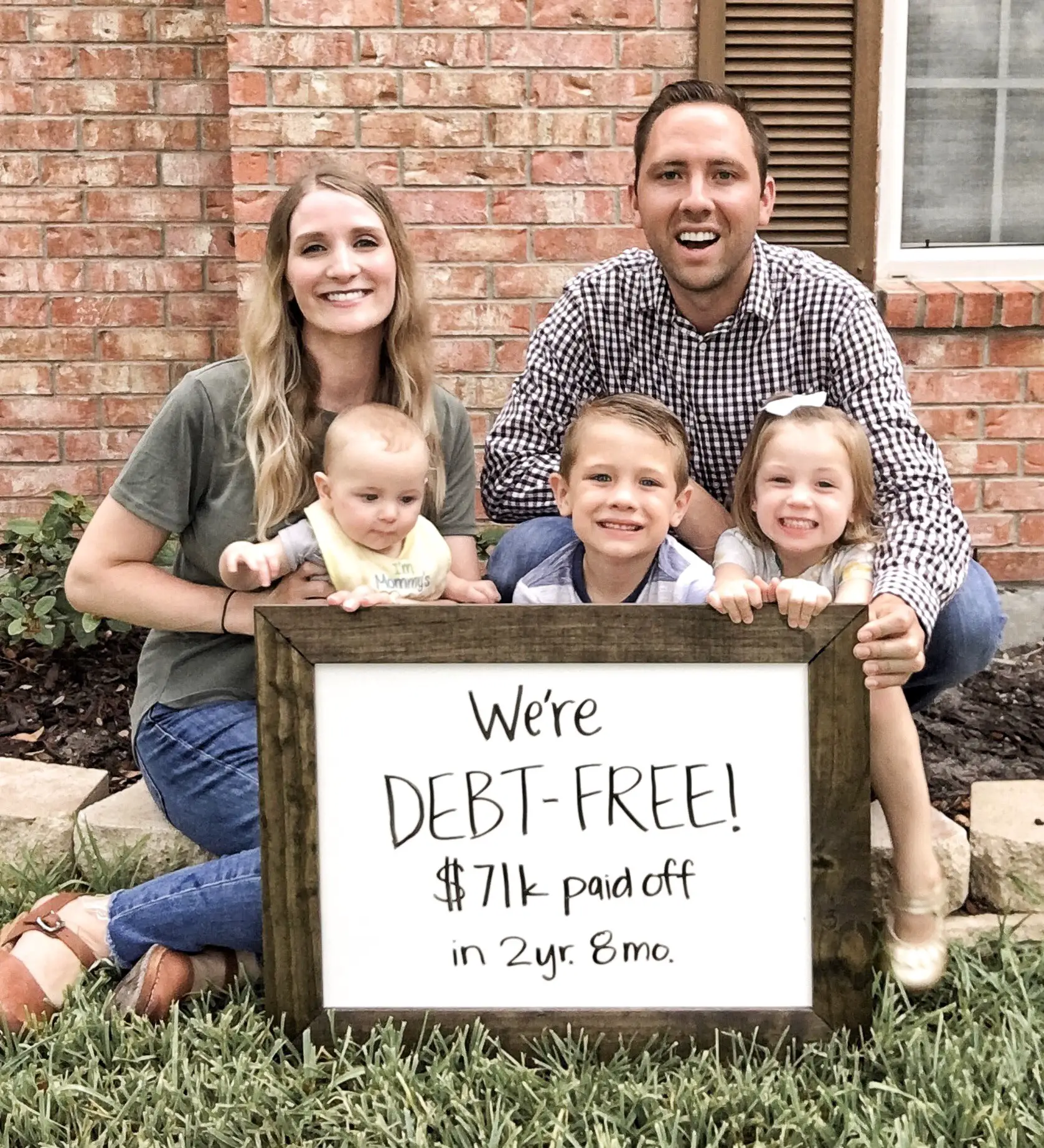This post may contain affiliate links where I earn a commission, at no additional cost to you, if you decide to make a purchase after clicking on a link. Please see our Disclosure Policy for full details. Thank you for your support!
No good at budgeting? That’s okay! What if there was a way you could move your money around every month to pay the bills on time, maximize saving, and start investing without taking all the time to do a budget? If this sounds like something you’d love, the “No Budget” method could be just what you need.
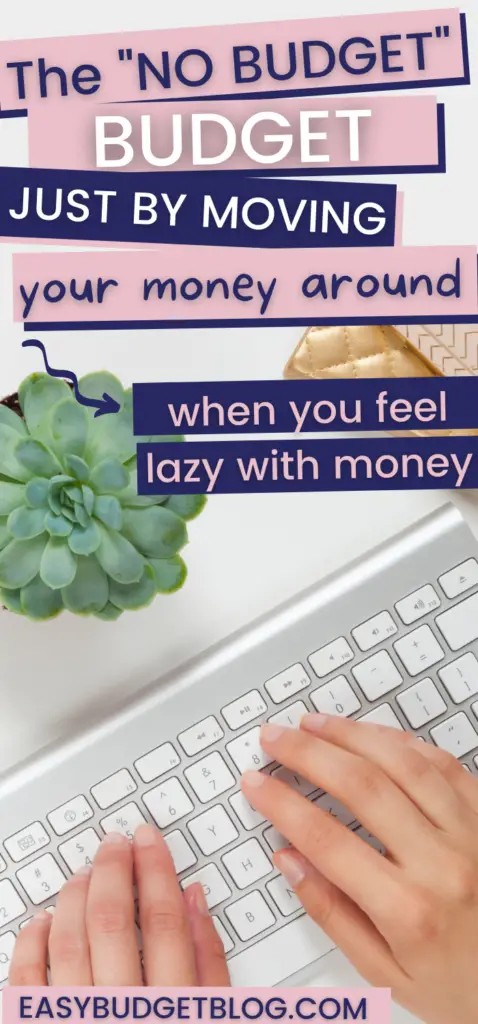
How can you manage your money well without actually budgeting?
Budgeting, while I believe is incredible helpful in managing your money right, is not a solution for everyone. Not everyone has the time or patience to do a regular budget.
So, how do you manage your money to ensure you’re being financially savvy and still hitting your money goals without actually budgeting? That’s where the “No Budget” method comes in.
If you’re familiar with any methods of budgeting at all, you know about Zero-Based Budgeting (my favorite), the 50-30-20 Budgeting Method, and the Envelope System. There’s a good chance none of these methods are working for you and you want to be better with managing your money every month, but you want to do it without all the time and effort that budgeting requires.
I think the “No Budget” method is just right for you, so let me explain what it is!
What is the “No Budget” Method?
This is a way to manage and move your money around every month without actually sitting down to budget and reconcile on a regular basis. With this method, you do not operate on a budget!
You don’t track your spending.
You don’t have budget categories.
You don’t know every detail about your outgoing expenses.
No spreadsheets, apps, or workbooks.
This “budgeting” method is based solely on your income and expected expenses and moving your money around each month with intention. That’s it.
Before You Start the “No Budget” Method, Do a Quick Assessment of Your Income and Typical Monthly Spending
This may seem like some work, but doing this assessment is what will allow you to move your money around every month successfully without budgeting! If you don’t get a baseline of some of these numbers, it won’t work. It will only take you about an hour to do this assessment.
1. Determine your income
The biggest variable in the “No Budget” method is knowing what you are bringing in each month. What is your total income from all income sources? That needs to include:
- Active Income:
- Salary
- Side hustle income
- Commission-based income
- Bonuses
- Passive Income:
- Alimony
- Child Support
- Veteran Benefits
- Royalties
- Rental Properties
- Affiliate Marketing
You need to know about any source that brings in money each month, no matter what that type of income it is. Total up your income and be aware of the timing of your pay each month as well. You mainly want to look at your net pay, the pay that actually hits your checking account every month after taxes come out.
2. Determine the total of your bills each month
Now that you know your total income, you need to know what bills are coming out and when. We’re talking the big ones:
- Rent/Mortgage
- Utilities
Plus every other bill that is fixed or on a regular payment schedule:
- Car payments
- Student loan payments
- Credit Card minimums
- Gym memberships
- Netflix/Hulu/Disney+
- Lawn mowing service
- etc.
You need to total up your bills and know how much they are each month, to make sure your income will cover these with ease.
3. Estimate how much your other spending costs per month
What about haircuts, groceries, gas, shopping, eating out and those miscellaneous items that pop up each month? Yes, you need to know about those too!
These are usually called variable expenses because they aren’t set and standard in amount or timing like most bills are. They tend to vary from month-to-month.
You can figure out this number by looking back at the past 1-3 months of transactions and adding them up, then getting an average.
That monthly average will give you a ballpark range of what you can expect to spend on variable expenses each month.
4. Figure out about how much extra there would be for debt/savings/investing each month
Once you have a general idea of your income, minus your bills and variable expenses, you’ll have an idea of how much of your income is leftover and unspent.
This extra money is the magic number, because this is the money that will be used to expedite debt payoff, save money quickly, or begin to invest.
5. Use these as a baseline numbers each month going forward
Now that you know a baseline total for each area: Income, bills, variable expenses and leftover money, you will be able to move forward with the “No Budget” method.

How to Implement the “No Budget” Method Every Month
STEP 1: At the beginning of the month (or pay period if you prefer to do this by paycheck), as soon as you get paid, pay all your bills first.
This ensures the bills take priority! Theres nothing worse than spending all your money only to remember that you have a $250 light bill coming out tomorrow when your bank balance is $39.45.
Avoid this by paying your bills first!
You can keep all your bills on autopay, or you may choose to pay them all manually as soon as you get paid. You can also take a hybrid approach and keep bills on autopay but pay some of them manually to get the money out of your account as soon as possible. Some billers won’t let you pay autopay early, and some may double draft you if you attempt this, so double check each bill before you try by calling the servicer. Most will let you pay the autopay early, though! You may also be able to change your autodraft bill date to make the date more convenient for you.
STEP 2: Next, save money or pay off debt in the amount you’ve determined you can afford each month.
Whether it’s $200 or $1000, you should have glanced over your income, bills, and expenses and determined about how much “leftover” money you have every month that you can put toward debt or savings. Do this right after you get paid too, to ensure you don’t spend this money away on accident.
You may also choose to send money toward debt or savings at the end of the month/pay period for more flexibility. This is a great option that will also work! The only shortcoming of this is that you are more likely to spend it unintentionally.
STEP 3: Whatever is leftover is yours to spend on your variable expenses until you get paid again.
At this point your bills are paid and you’ve saved/paid off some debt. The money you have remaining in your bank account should get you through all your variable spending until you get paid again or your next month’s budget starts! This will cover your groceries, gas, clothing, entertainment, and more.
When it’s gone, it’s gone! Your variable expenses have some wiggle room, so some months you may have more money than others. Make it a rule that you only spend what’s in your bank account and when the money is gone, you’re done spending until you get paid again and a new “no budget” starts.
IMPORTANT: Rules for Using the “No Budget” Method
In order to successfully move and manage your money with the “No Budget” method, you’ll want to follow a few basic rules. Without a real budget in place, you aren’t planning out every dollar and you aren’t tracking your spending to make sure you don’t overspend, so these rules will help ensure your success!
1. Don’t use credit cards. This ensures you’ll never overspend.
If you’re going to go the route of the “No Budget” method, it’s important that you don’t use credit cards. Why? Because you only know “about” how much money you’re spending each month… and because it’s not a hard and fast number, using credit cards could put you in danger of overspending.
That would be the worst-case scenario: Overspending on credit cards, getting hit with high interest rates, and going into debt.
So, avoid the plastic to make sure you only spend cash you have.
2. On the last day of the pay period/month, move any extra money in your bank account over to savings or to pay off debt
If you have any extra money at the end of the pay period/month, make a plan for it: to pay off debt or savings usually works great! Don’t let it sit there unused and without a name and a plan. It might end up getting spend on something pointless.
Even if you saved some money or paid off debt as soon as you got paid (like mentioned in STEP 2 above), you’ll likely still end the month with a few dollars leftover. Make a plan for that money and pay off debt, invest, or save it.
3. Keep a $100 buffer in checking account just in case
The “No Budget” method is all about ease, right? Not having to worry about checking your accounts every day or updating an app to tell you you’re overbudget on a particular line item. It’s about not feeling restricted and still getting your financial life together.
While the “No Budget” method is great for the lazy budgeter, it’s not so fantastic for vigilance. That’s why, as a risk precaution and proactive action, you should keep at minimum of $100 in your checking account at all times.
In the event that you do overspend, or just don’t have your eyes on your account for a long duration, you’ll have that $100 as a buffer so that you don’t end up going in the red and having to shell out on overdraft fees.
4. Check your bank account regularly
Like I said just a minute ago, the “No Budget” method is great for people who want a hands-off approach to their money management. That doesn’t mean you’re completely off the hook though.
Check your bank account at least once a week, if not more. Since you aren’t tracking every dollar, you need to keep an eye on the general direction of your finances, and that means checking to make sure you’re not overspending, missing a bill or missing out on your debt payoff or savings goals.
5. Automate, automate, automate
Since you aren’t up in your finances’ business every day, or tracking everything, automation is key.
Set up automatic savings every month. Set up auto-draft on all of your bills from your checking account as well. Whatever works for you, automate as much as you can and want to!
6. Review spending at the end of the month
Spend 20 minutes reviewing your bank statements and make any mental adjustments needed for next month (i.e. “spent a little too much on eating out, better cut that back next month.”). Since you have automated and you have a general idea of where your money is going, this is really about keeping track of your miscellaneous expenses.
Also take note of any expenses that may be coming up like car maintenance or property taxes. This is essentially a check in to make sure you’re prepared for expenses that aren’t categorized as “every day”.
You’ll also want to take notice of any increases or decreases in your spending habits.
“No Budget” Method Example:
Monthly Income:
- Salary: $3,700
- Side Hustle Income: $1,000 (post tax)
- Total Income: $4,700
STEP 1: As soon as you get paid the $4,700, you are going to pay all your bills to make sure they take priority.
Monthly Bills:
- Rent/Mortgage: $1,200
- Utilities: $400
- Car payment: $450
- Car insurance: $100
- Student loan payment: $200
- Netflix: $15
- Total: $2,365
After you pay the bills, there will be around $2,335 remaining ($4,700-$2,365=$2,335).
STEP 2: Pay off $500 of debt
This will leave you with $1,835 for the rest of the month/pay period. ($2,335-$500=$1,835)
STEP 3: Use the remaining $1,835 to pay for all your variable spending for the rest of the month. Everything from restaurants, to groceries, to gas, to entertainment, etc. It might look something like this but doesn’t need to be this planned out, of course, since it’s a “No Budget” method.
Monthly Variable Spending:
- Personal spending money: $100
- Eating out: $300
- Groceries: $600
- Entertainment: $150
- Other: $685
- Total: $1,835
At the end of your pay period or month, if there is any money leftover that you didn’t spend, use it to pay off more debt or save it.
Don’t use a credit card to ensure you never overspend and check your bank accounts weekly throughout the month.
You can do this for the entire month at a time, or you can break this up into paychecks (recommended). So for each paycheck, pay the bills that come out in that pay period, then save a little/pay off some debt, and then use the rest for variable spending. Repeat with each paycheck.
REPEAT!
Pros of the “No Budget” Method
- Fast and easy
- No spreadsheets, apps, or workbooks required
- Can become habit very quickly
- Great for people who make plenty of money to cover bills and spending and just want to manage things in a more organized and thoughtful way
- Great for people who have budgeted for years, paid off debt, and just want a simpler way to manage their money
- Great for people who don’t have time to budget
Cons of the “No Budget” Method
- Numbers are not as exact as with a zero-based budget
- Easier to come up short on money from miscalculating
- May not make as fast of progress on debt payoff
- Every dollar doesn’t have a name and a plan, so there may be more unintentional spending
- More difficult to know how much you can safely spend, and how much you can save, and when
Using this method you won’t have to actually budget or track expenses, but if you avoid credit cards, pay your bills first, and make saving and debt payoff a priority, you can still make financial progress!
You don’t have to budget every dollar to be successful with money management. As long as you have a personal framework for your income, expenses and spending, you can still allocate money towards debt payoff, savings, sinking funds, investing and general wealth building practices.
I would absolutely recommend budgeting to 98% of people. However, I know that it isn’t realistic for every single person. This is an alternative if you are one of those people!
If you think you need something a little more organized and exact than this (a real budget where you tell your money where to go before you get paid and then follow through with your plan every month!) to help you make progress fast, check out my article:
How to Make a Budget: Step-by-Step Guide + FREE Excel Template
Did you enjoy this post about the “No Budget” Method? If so, pin it to Pinterest for later!

